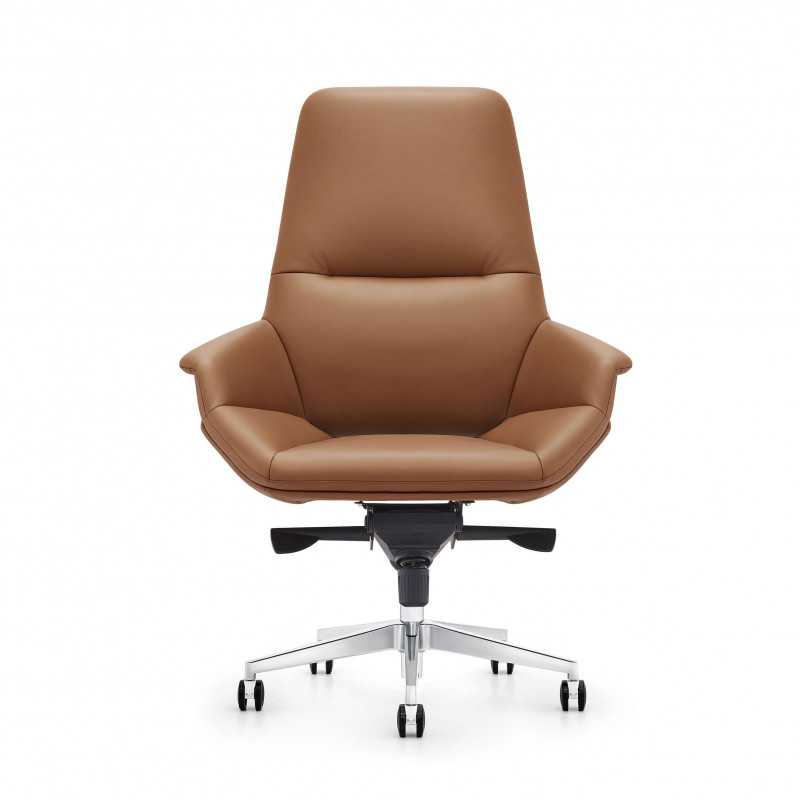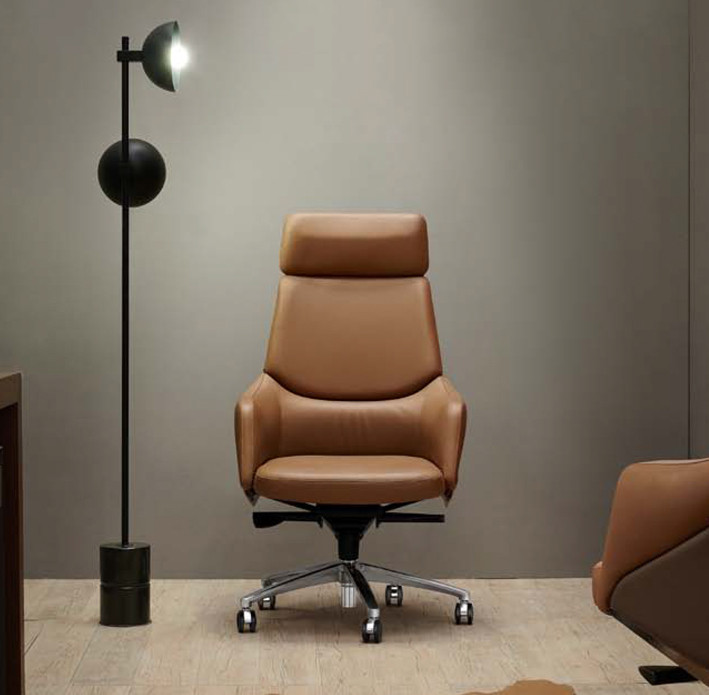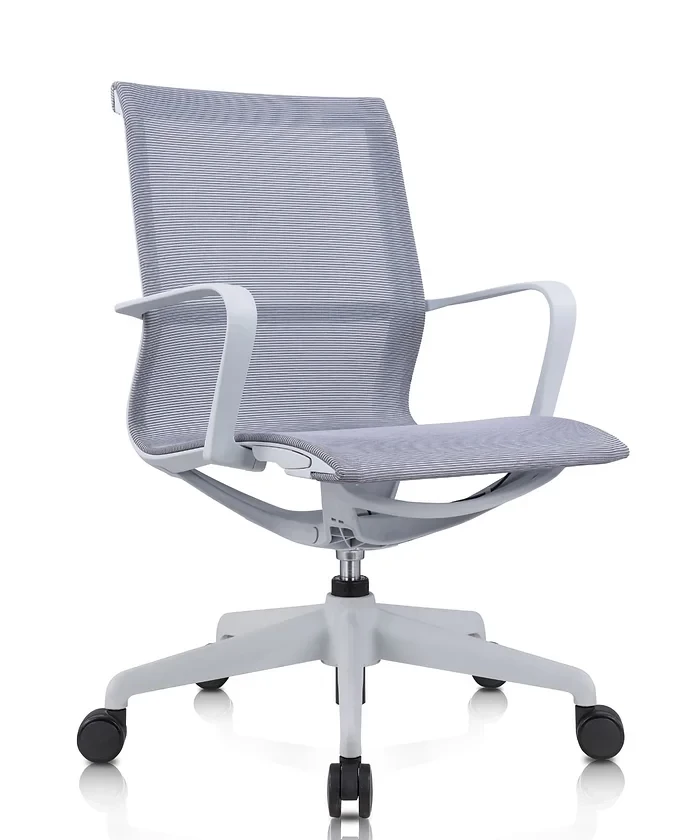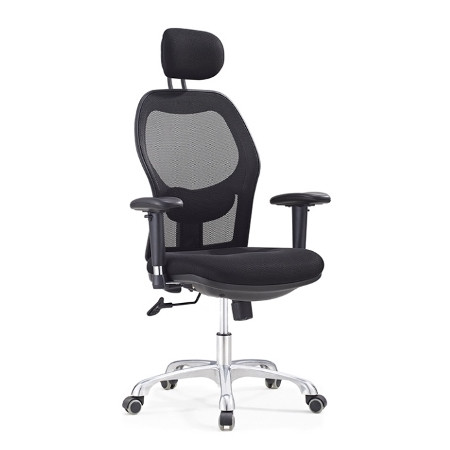
Leather vs. Mesh Office Chairs: Which One Suits Your Office Best?
Introduction
Office chairs do more than provide a place to sit—they shape your comfort, productivity, and even your professional image. Two of the most popular types, leather and mesh office chairs, offer contrasting benefits. While leather offers luxury and executive appeal, mesh chairs are known for breathability and ergonomic design. The decision isn’t just about style—it’s about what supports your day-to-day routine best. This guide breaks down the features of each chair type so you can confidently choose the one that suits your workspace.
1. Comfort and Long-Term Sitting
Mesh chairs typically provide better ventilation, making them ideal for long hours in warmer environments. Leather, on the other hand, offers a plush, cushioned experience that feels luxurious but can trap heat over time. Comfort depends on climate and work duration.
2. Breathability and Airflow
Mesh chairs excel in airflow. Their perforated backrest promotes continuous ventilation, reducing sweat and discomfort. Leather chairs, though smooth and soft, lack breathability and may not be ideal for users prone to overheating during extended work sessions.
3. Aesthetic and Executive Appeal
Leather chairs instantly elevate a room’s prestige, offering a polished, executive look. They pair well with traditional or formal office setups. Mesh chairs have a more modern, minimalist appearance, often fitting into contemporary or tech-focused environments.
4. Maintenance and Cleaning
Leather requires regular conditioning to prevent cracking and maintain its sheen. Spills are easier to wipe off, but stains can be difficult to remove. Mesh is low-maintenance—dirt and dust can be vacuumed or wiped down quickly without special care.
5. Ergonomic Support and Adjustability
Mesh chairs often lead in ergonomic design with dynamic lumbar support, flexible backrests, and lighter construction. While some high-end leather chairs offer excellent ergonomics, they may lack the breathability that enhances long-term comfort.
6. Durability and Lifespan
High-quality leather chairs are long-lasting and resistant to wear when properly maintained. Mesh chairs tend to be durable as well, though cheaper models may sag over time. The longevity of both depends heavily on build quality and usage.
7. Temperature Sensitivity
Mesh materials adapt well to temperature fluctuations, keeping users cool. Leather absorbs heat and may become uncomfortably warm in non-air-conditioned spaces, especially during the summer months.
8. Price and Value
Leather chairs are generally more expensive due to material and craftsmanship. Mesh chairs range from budget-friendly to premium, offering ergonomic benefits at a variety of price points. Choose based on what matters most: comfort or prestige.
9. Flexibility in Movement
Mesh chairs are typically lighter, making them easier to roll or reposition. Leather chairs are often heavier and more robust, suitable for static executive setups rather than flexible, dynamic work environments.
10. Workspace Fit and Style
Consider the aesthetic of your office. A leather chair may complement wood desks and corporate boardrooms. Mesh chairs pair better with minimalist setups and collaborative workspaces focused on efficiency and movement.
Additional Considerations Before Choosing
11. Adjustability Features
Mesh chairs frequently offer more customization, with adjustable arms, lumbar, seat height, and tilt mechanisms. Some leather chairs offer adjustability but focus more on visual appeal than function.
12. User Posture Support
Mesh backrests follow the spine’s natural curve, offering targeted support. Leather chairs often use thicker padding, which can feel luxurious but may not contour to the body as precisely without ergonomic shaping.
13. Noise and Movement
Leather may squeak with movement over time, especially if not maintained properly. Mesh tends to be quieter and more seamless when reclining or shifting position.
14. Eco-Friendliness and Materials
Mesh chairs often use recyclable or synthetic materials, making them more eco-conscious. Genuine leather, while premium, is resource-intensive and may not appeal to sustainability-focused buyers.
15. Armrest Design
Mesh chairs often have soft, flexible armrests that adjust to fit typing or reading postures. Leather chairs may offer fixed or padded arms that prioritize luxury over flexibility.
16. Chair Weight Capacity
Both types offer strong support, but leather chairs tend to be more rigid and suitable for users seeking solid, weighty construction. Mesh chairs with reinforced frames also offer high weight capacities but are lighter in build.
17. Chair Noise During Use
A well-constructed mesh chair tends to be quieter, while leather chairs may produce more sound with frequent adjustments or movement.
18. Customization and Color Options
Mesh chairs are available in a wide range of colors and frames, making them ideal for creative or branded environments. Leather options are more limited, usually available in executive colors like black, brown, or tan.
19. User Preference and Feel
Some users prefer the firm tension and support of mesh, while others enjoy the soft, enveloping comfort of leather. It’s worth trying both to see what feels better based on your daily routine.
20. Workplace Culture and Design Intent
In formal or client-facing environments, leather may enhance the perception of professionalism. Mesh chairs are perfect for dynamic, fast-paced workspaces prioritizing function and ergonomics.
Recommended Products

-
Dambi Executive High Back Leather Chair
A classic executive chair crafted in leather, Dambi combines premium padding with elegant lines, ideal for traditional or executive office spaces.
-
Mambi Executive High Back Leather Chair`
This high-back leather chair offers plush comfort and a professional look, with sturdy construction suited for formal and private offices.Mesh Chair

-
Finmon Mesh Office Chair – Grey
With a breathable mesh back and ergonomic support, the Finmon is a smart pick for all-day comfort in collaborative or tech-savvy workspaces.
-
Mujaan Mesh High Back Ergonomic Chair
This high-performance mesh chair supports posture and movement, featuring adaptive ergonomics that fit perfectly in fast-paced modern offices.
Final Thoughts
Choosing between leather and mesh office chairs depends on your daily work habits, office environment, and design preferences. Leather chairs bring an aura of sophistication and comfort, while mesh chairs offer breathability, flexibility, and ergonomic functionality. Whether you prioritize style or performance, there's an option that matches your vision for the ideal office chair. By weighing the features that matter most, you can make a choice that enhances both your workspace and your well-being.
FAQ
Which is better for long hours—leather or mesh?
Mesh chairs tend to be better for long hours due to their breathable design and ergonomic adjustability, though high-end leather chairs can also provide lasting comfort.Do leather chairs get hot?
Yes, leather can retain heat and may feel warm during extended use, especially in environments without air conditioning.Are mesh chairs durable?
High-quality mesh chairs are durable and maintain their shape over time, though lower-end models may lose tension after heavy use.What type of office benefits from leather chairs?
Formal, executive, or client-facing environments often prefer leather chairs for their professional and luxurious appearance.


